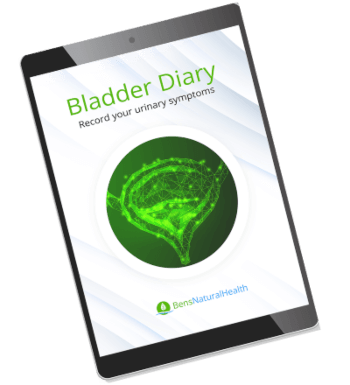- What is a kidney stone?
- What to expect when passing a kidney stone
- How long does it take for a kidney stone to pass?
- How to pass a kidney stone
- How do you know when a kidney stone is about to pass?
- What is the fastest way to dissolve a kidney stone?
- What helps relieve kidney stone pain?
- Tips for recovery
- Conclusion
- Source
Kidney stones, also known as renal calculi or nephrolithiasis, are common in the United States.
According to the U.S. National Institutes of Health, 11% of men and 6% of women have kidney stones at least once during their lifetime.
Within 12 months, 2.1% of adults over 20 years old have experienced passing kidney stones, as reported in a survey.
Kidney stones can remain a silent health condition, or they can also be a pain in the neck.
If you are suffering from a kidney stone, this article may be helpful.
What is a kidney stone?
Kidney stones are solid, stone-like objects formed by chemicals in our kidneys. They can be in various sizes, shapes, colors, and materials.
There are four main types of kidney stones, which are:
- Calcium stones. Calcium oxalate and calcium phosphate make up most kidney stones.
- Struvite stones. They are usually precipitated by infections, such as urinary tract infections.
- Uric acid stones. They are formed by the accumulation of uric acid in your urine.
- Cystine stones. They are the rarest type of stones caused by a hereditary genetic disorder called cystinuria.
What to expect when passing a kidney stone
If your kidney stone is small and does not cause any symptoms, your doctor will likely recommend you to take an expectant (“watch and wait”) or conservative approach.
This is because small kidney stones can usually flow out spontaneously and are unlikely to cause serious troubles.
Sometimes, you won’t even know you have a kidney stone, and it can pass out spontaneously and painlessly when you pee.
Based on a recent multi-center cohort research study, a kidney stone smaller than 5 mm is very likely (89%) to be passed out spontaneously.
For larger stones, the success rate is lower, at 49% for stones between 5 to 7 mm and 29% for stones larger than 7 mm.
Kidney stones are produced and usually stay silent in the kidney. Symptoms start to manifest when they dislodge and move into the ureter, which is the tube connecting the kidney to the bladder.
The ureters are usually 20 to 30 cm long and 3 to 4 mm in diameter. Through continuous muscle contraction and relaxation, the ureter transport urine from the kidney to the bladder, then excrete the waste product via the urethra.
When a kidney stone drops into the ureter, it will be transported downwards by the ureter in a wave-like movement, just like urine transportation.
Small kidney stones can pass through the narrow diameter well. But large stones may get stuck in the narrow passage, causing a block in the ureter.
As a result, urine cannot be cleared from the kidney, and it flows back to the kidney. An accumulation of urine swells up the kidney, causing a serious health condition known as hydronephrosis.
You may experience constant pain due to pressure exerted by urine retention in the kidney.
Meanwhile, the ureter muscles contract and relax to move the impacted stone through. This causes spasms of the ureter, and the pain induced is on and off, known as renal colic.
Renal colic can range from mild to severely debilitating pain. You will feel pain in your lower back, sides of the body, groin, or all three regions. It is often associated with sweating, nausea, and vomiting.
Bladder stones are hard solids, and some might have sharp edges. They can injure the ureter wall and cause bleeding, so you might notice blood in your urine.
Besides, bladder stones can become a nidus for bacteria, causing infections in the urinary system, which manifest as fever and chills.
Although it is generally thought that only kidney stones less than 5 mm can pass through the ureter smoothly, scientists recently revealed that the ureter could actually accommodate stones 11 to 22% larger than its inner diameter.
Another factor deciding the success rate of spontaneous kidney stone passing is the location of the stone.
83% of stones in the lower ureter (nearest to the bladder) can be successfully passed out. This is followed by 70% for stones in the middle ureter and 52% for those in the upper ureter.
In short, it can be very painful and complicated to pass a kidney stone, with various consequences.
On the other hand, it can also be a silent event, especially if your kidney stone is small and located in the lower ureter.
Get your FREE bladder diary
- Daily bladder diary
- Better understand your urinary symptoms
- Step-by-step guide
How long does it take for a kidney stone to pass?
Similar to the chance of spontaneous stone elimination, how fast a kidney stone can pass depends on its size and location.
On average, stones smaller than 4 mm requires a month, stones between 4 to 6 mm require 1.5 months, and those larger than 6 mm takes around 1 year to come out on their own.
Your doctor can give you medication to smoothen the passing of kidney stones. There are also several tips that you may find helpful, which we discuss later in this article.
How to pass a kidney stone
A kidney stone will travel from the kidney, ureter, and bladder and finally get out from our bodies via the urethra. Let’s see what you will experience when your kidney stone travels across these areas.
In the kidney
Waste products and mineral deposits in the renal pelvis form kidney stones. The process of kidney stone formation is not painful.
You won’t feel anything until they move into the ureteropelvic junction, the narrow part connecting the kidney to the ureter.
The impacted stone can irritate and stretch your kidney capsule, causing local inflammation and swelling of the kidney (edema).
The pain is typically described as intense, spastic pain as the kidney tries to push the stones into the ureter.
This may be the worst phase for most people. Some even describe it as more painful than giving birth.
In the ureter
The stone has entered the ureter, but unfortunately, the pain remains. For any stone larger than the inner diameter of the ureter, it will scrape through the soft tissue of the ureter’s inner wall.
The ureter will squeeze harder to push the stone, and this can cause tremendous, throbbing pain.
Besides the ureteropelvic junction, there are two other sites a kidney stone is likely to be stuck: near the pelvic brim (where the ureter slightly turns its direction) and the ureterovesical junction (the narrowest ureter part connecting to the bladder).
In the bladder
After passing all the narrow sites, the kidney stone now enters the bladder. The pain will likely be gone, but you will start to feel pressure in your lower abdomen.
Your bladder will detect the foreign body (stone) and try hard to remove it. You may feel a frequent urge to pee and, sometimes, a burning sensation or discomfort in your lower abdomen or groin area.
In the urethra
Finally, the kidney stone enters the last passage of our urinary system: the urethra. It is unlikely to cause pain because the urethra has almost double the width of the ureter.
However, a larger stone can still be stuck at the entrance of your urethra. You will then need to wait for a while and try to strain your detrusor muscles, just like when you pee.
Keep pushing until the stone comes out from your body. Keep the stone, as your doctor may want to examine it.
How do you know when a kidney stone is about to pass?
As discussed, you may feel different symptoms when a kidney stone comes out from the kidney and is about to pass. In brief, you will feel:
- Constant or wave-like pain in your back, flank, or lower abdomen.
- Urinary symptoms, such as increased trips to the toilet (frequency), difficulty withholding the urge to urinate (urgency), pain during urination (dysuria), problems starting or maintaining urine flow (hesitancy), feeling of incomplete voiding, and seeing blood in the urine (haematuria).
- Nausea and vomiting.
Among all the symptoms of kidney stones, cessation of pain may be the most sensitive (79.7%) indicator of successfully passing a kidney stone, according to recent research.
What is the fastest way to dissolve a kidney stone?
Several interventions are available to treat a kidney stone, and surgery is the fastest way. Research studies suggest that surgical interventions work better on stones with features such as:
- Diameter larger than 9 mm
- Volume larger than 0.2 cc
- Density higher than 700 HU
The main types of surgery to remove kidney stones are:
- Shock wave lithotripsy (SWL)
- Ureteroscopy
- Percutaneous nephrolithotomy (PCNL)
Again, the stone’s size and location are key factors in determining which surgery works best for you.
Shock wave lithotripsy (SWL)
SWL is a non-invasive technique that breaks down stones using shock waves.
The stone’s location will first be pinpointed using ultrasound, and the shock waves will be sent to the stone and break it down into smaller pieces. These tiny fragments of stones can then be passed out later when you pee.
You will receive painkillers before starting the procedure, so pain should be minimal. If the first try of SWL fails to treat your kidney stones, your doctor may suggest repeating the procedure or opting for other surgical interventions.
Ureteroscopy
Ureteroscope is a long tube equipped with a camera and light. Doctors use it to see the condition inside your ureter directly.
You will be put to sleep during a ureteroscopy, and you should not feel any pain. The ureteroscope is inserted into your urethra, ascending to the bladder and ureter.
Then, your doctor will try to remove the stone using another instrument or break it using a laser, allowing it to be passed during urination later.
Evidence from a multi-center randomized controlled trial showed that patients who underwent ureteroscopy to remove their kidney stones are 82% less likely to have a recurred stone.
Even if they do, they will have the stone much later (75% longer duration) than the untreated group.
Percutaneous nephrolithotomy (PCNL)
Similar to ureteroscopy, a PCNL is done under general anesthesia. During the procedure, your doctor will make a small incision in your back and insert a camera (nephroscope) into your kidney.
Once the stone is located, it will be taken out or broken down using laser or pneumatic energy.

What helps relieve kidney stone pain?
Kidney stones can be excruciating. Take over-the-counter pain medications if you have them at home. Nevertheless, it is better for you to visit a doctor when the pain gets severe and affects your daily life.
Medications that relieve kidney stone pain generally include:
- Non-steroidal anti-inflammatory drugs (NSAIDs), such as ketorolac and diclofenac. They are usually given via injection (intramuscular) or transfuse into your blood vessel (intravenous).
- Opiates, such as morphine. They are the next go-to step if NSAIDs fail to control the pain.
- Antiemetics, such as metoclopramide and ondansetron. They are used to reduce associated nausea during a painful stone episode.
- Nerve block. Numbing medication is injected into the nerve to stop flank pain.
- Alpha-blockers, such as tamsulosin (Flomax). It can help relax the ureter muscles to allow the kidney stone to pass easier.
Tips for recovery
After successfully removing stones, either spontaneously or via surgery, you should make certain changes to stop the stone from returning.
Research studies report a stone recurrence rate as high as 66.9%. To avoid having a relapsed stone, you can practice the tips below:
- Drink plenty of water. You should drink up to 3 L of water and aim for a urine output of 2 to 2.5 L daily.
- Drink more water if you sweat a lot, like during hot weather or exercising.
- Drink fresh lemon juice or add citric acid to your water.
- Avoid carbonated drinks.
- Reduce salt intake.
Depending on your type of stones, your doctor may suggest cutting down certain types of food. However, do not modify your diet before discussing it with your doctor. If they want you to follow a specific kidney stone diet, they can advise you on this.
Conclusion
If you think you have kidney stones, visit a doctor as soon as possible. A quick, simple X-ray can tell if you have a stone easily.
Depending on your health condition, your doctor may suggest other tests to facilitate further treatment. Get their advice and learn how to prevent or manage a kidney stone.
Explore More








